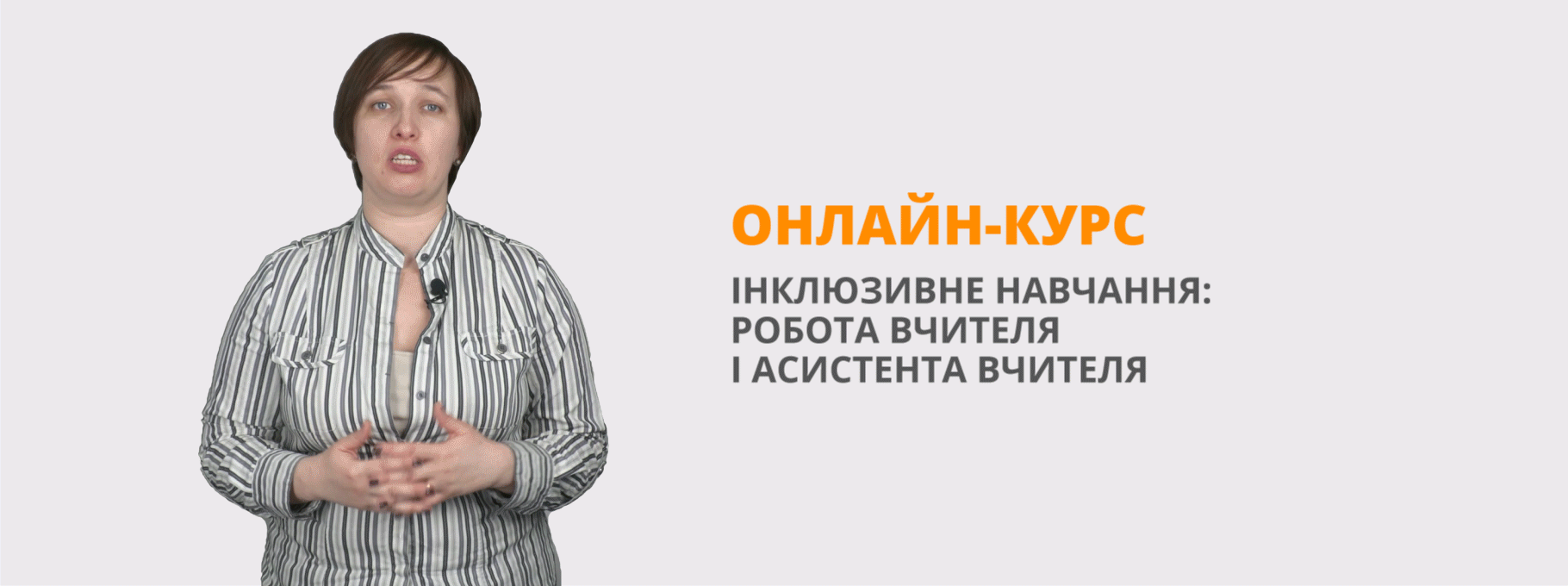Молодіжні організації та громади в Україні та у світі. Молодіжні субкультури.
Методична розробка заняття
Молодіжні організації та громади
в Україні та у світі.
Молодіжні субкультури.

МЕТОДИЧНА РОЗРОБКА ЗАНЯТТЯ
Предмет: Іноземна мова
Тема: Молодіжні організації та громади в Україні та у світі.
Молодіжні субкультури.
Результати навчання
- Фахові компетентності:
Здатність
- використовувати теоретичні й практичні знання з теми "Молодіжні організації та громади в Україні та у світі. Молодіжні субкультури.";
- вміти здійснювати регламентування спілкування, ефективне слухання;
- дотримуватися орфоепічних норм англійської мови в усному мовленні та орфографічних – у писемному;
- вміти доречно використовувати моделі звертання, привітання, ввічливості;
-
володіти різними видами усного спілкування.
- Загальні компетентності:
Здатність:
- до абстрактного мислення, аналізу і синтезу усвідомленого сприймання надбань іншомовної культури як цінності;
- спілкуватися іноземною мовою як в усній, так і писемній формі;
- внутрішня потреба самостійно здобувати знання;
- застосовувати знання у практичних ситуаціях, володіти інформацією й оперувати нею відповідно до потреб, приймаючи обгрунтовані рішення;
- бути критичним та самокритичним;
- працювати самостійно та в команді;
- шукати й аналізувати інформацію з різних джерел.
Вид заняття: узагальнення та здобуття нових знань.
Міжпредметна інтеграція:
а) забезпечуючі дисципліни: соціологія; історія;
б) забезпечувальні дисципліни: соціологія, історія, культурологія.
Методичне забезпечення:
а) наочність: навчальна презентація; відеофільм;
б) роздатковий матеріал: картки для індивідуальної роботи студентів; ксерокопії текстів для опрацювання; підручники Оксани Карп’юк ‘English”, інформативний матеріал; словники.
Хід заняття
І. Організаційний момент
Greeting. – Good morning, students. I’m glad to see you.
- How are you?
- Who is absent?
- Are you ready to work?
ІІ. Підготовка студентів до заняття
2.1 Epigraphs to the lesson
The foundation of every state is the education of its youth.
Diogenes
Good habits formed at youth make all the difference.
Aristotle
It's very hard to teach anything to a young man who knows everything.
Paul Malmont, an American author
Youth is not a time of life; it is a state of mind;
it is not a matter of rosy cheeks, red lips and
supple knees;
it is a matter of the will, a quality of the
imagination, a vigor of the emotions;
it is the freshness of the deep springs of life.
from the poem “YOUTH” by Samuel Ullman
2.2 Main aims:
a) educational: conduct a speech warm-up; summarize the students' knowledge of the material from the prevoius theme; to process thematic texts;
b) developmental: to develop students' memory, logical presentation of information, attention, auditory memory, skills and abilities of oral speech, reading and writing; to improve the skills of independent work;
c) educational: to maintain interest in learning a foreign language; inculcate in young people a sense of responsibility for their own actions, a culture of behavior and communication.
2.3 Speech warm-up
Conversation with students. Regime T – St., T – St.1, St.2, St.3.
- What are you?
- Where do you study?
- Where do you live? (live in a students’ hostel or take a room)
- Do your parents help you financially?
- What problems do you have living apart from your parents?
2.4 Repetition of learned vocabulary to the topic.
And today we are going to talk about Youth Clubs and Organization. So let's start. Before we get to our topic, actually, you had home assignment for today. So you have to learn words from your previous lesson. Now we are going to check how well you remember the words. So our task is to fill in the sentences with these words on the board. Two of these words are extra it means that we do not to use them. So let's take a look at the words, lets revise them and we all read the text.
- respect
- unique
- follow
- outfit
- scruffily
- spender
- status
- weird
- upside
- boutique
повага
унікальний
слідувати
наряд
неохайно
марнотратник
статус, стан
дивний, чудернацький
верх
бутик, модний магазин
T. So these words we are learnt on the last lesson. Now let's figure out which gaps need which word. So let's begin.
I'm not a fashionista. I tend not to (1)________ every fashion trend. They change so fast! I think style is more important. I never plan my (2) ______ before I leave home. I know which clothes look nice on me so I don't spend time doing it.
As I'm not addicted to fashion, don’t buy expensive clothes, so yeah, I’m definitely not a (3)_________. I prefer to shop in mass market brand stores or at local shops. I’m not a fan of luxury (4)________. I understand that clothes may reflect you social (5)_______ , so I just try to look neat and cute. However, when I go out with my friends |can put on something really unusual, even something (6) _________.
Anyway, I guess it’s very important to (7)_______ people’s choices in what they want to wear. We are all so different! And clothes can help to show how (8) ______ people are.
T. ОК, now let's take a look on text ones again. And now I hope that you already have some ideas of which word to use in each gap. Now let's check your ideas.
(Students work with the text)
T. OK, now are as we recalled the information that you learned on previous lesson, we can way forward.
ІІІ. Узагальнення та систематизація знань, умінь та навиків
- Life of young people abroad.
Conversation with students. Regime T – St., T – St.1, St.2, St.3.
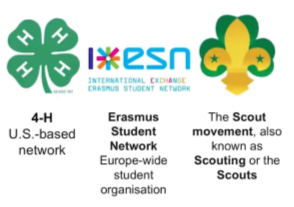 Т. So as it has already mean mentioned today we are going to talk about Youth Organization. What is Youth Organization actually? Here you can see a definition.
Т. So as it has already mean mentioned today we are going to talk about Youth Organization. What is Youth Organization actually? Here you can see a definition.
A youth organization is a type of organization with a focus upon providing activities and socialization for teenagers.
So basically this is like a club where you can go and you can reveal your talents, you can socialized and you can communicate with people that you have same talents or interests.
So there are actually a lots of organizations around the world. They are national, they are worldwide. Now let's take a look at the most famous ones.
So, here you can see the logos and emblems of the organization.
Now let's take a look at each organization separately. So that you'll learn more about them. Some students had got a task to prepare information presentation about these organization.
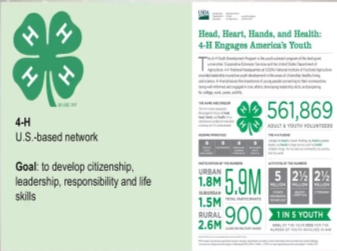 So let's take a look at about first one here. 4-H
So let's take a look at about first one here. 4-H
S. 4-H is a U.S.-based network of youth organizations whose mission is "engaging youth to reach their fullest potential while advancing the field of youth development". Its name is a reference to the occurrence of the initial letter H four times in the organization's original motto "head, heart, hands, and health", which was later incorporated into the fuller pledge officially adopted in 1927. The goal of 4-H is to develop citizenship, leadership, responsibility and life skills of youth through experiential learning programs and a positive youth development approach. Clubs in today's 4-H world consist of a wide range of options each allowing for personal growth and career success. The 4-H motto is "To make the best better", while its slogan is "Learn by doing" .
The 4-H pledge is:
I pledge my head to clearer thinking,
my heart to greater loyalty,
my hands to larger service,
and my health to better living,
for my club, my community, my country, and my world
It is a common practice to involve hand motions to accompany these spoken words.
The official 4-H emblem is a green four-leaf clover with a white H on each leaf standing for Head, Heart, Hands, and Health. The stem of the clover always points to the right.
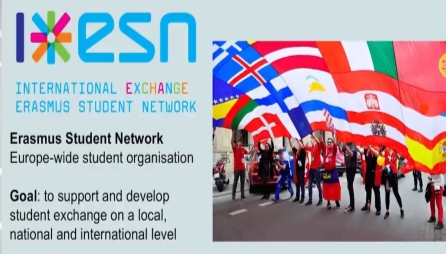 T. Another association, another organization for youth is Erasmus Student Network
T. Another association, another organization for youth is Erasmus Student Network
S. The organization supports and develops student exchanges, both inside the Erasmus+ programme and outside of it. The local ESN sections offer help, guidance and information to both exchange students and students doing a full degree abroad.
The goal of the organisation is to support and develop student exchange on the local, national and international levels. It is composed of around 15.000 members in over 530 local sections in 42 countries in Higher Education Institutions, including universities,
polytechnics, and university colleges.
ESN works on three levels – local, national and international. It is only active within the borders defined by the Council of Europe.
The organization supports students from Erasmus programme and other bilateral agreement. It cooperates with national agencies in order to help international students.
By the way, there is Erasmus Student Network in Ukraine. It is a national-level student organization that represents local Erasmus Student Network sections. At the moment, they have a section in Kyiv and another one in Chernivtsi. Their mission is to represent international students, thus providing opportunities for cultural understanding and self-development under the principle of Students Helping Students.
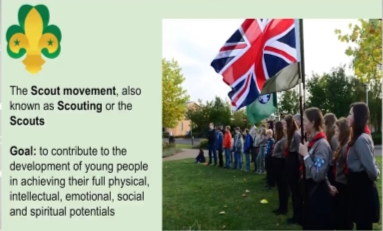 T. What about the next one? The Scout Movement, also known as Scouting or the Scouts
T. What about the next one? The Scout Movement, also known as Scouting or the Scouts
S. Scouting, also known as the Scout Movement, is a worldwide youth movement employing the Scout method, a program of informal education with an emphasis on practical outdoor activities, including camping, woodcraft, aquatics, hiking, backpacking, and sports. Another widely recognized movement characteristic is the Scout uniform with neckerchief and campaign hat. Distinctive uniform insignia include the fleur-de-lis and the trefoil, as well as merit badges and other patches.
The trigger for the Scouting movement was the 1908 publication of Scouting for Boys written by Robert Baden-Powell. In this book he introduced the Scout promise, as follows: "Before he becomes a scout, a boy must take the scout's oath, thus:
'On my honour I promise that — I will do my duty to God and the King.
I will do my best to help others, whatever it costs me.
I know the scout law, and will obey it.'
Common ways to implement the Scout method include having Scouts spending time together in small groups with shared experiences, rituals, and activities, and emphasizing 'good citizenship' and decision-making by young people in an age-appropriate manner.
The Scout Motto, 'Be Prepared', has been used in various languages by millions of Scouts since 1907. Less well-known is the Scout Slogan, 'Do a good turn daily'.
T. So, in these organization students and children usually unite together, they do different activities and they try to develop themselves.
Let's take a look at the questions.
- Do you participate in any youth clubs or organization?
- Would you like to take part in a youth organization?
- What youth organization exist in Great Britain?
T. So, now that you have thought of this question, let's move to another task.
Now we are going to read the text about MAIN YOUTH ORGANIZATION IN GREAT BTITAIN. And after the text we will check how well you remember the facts. So let's read and listen.
In Great Britain there is a number of youth organizations that work under the British Youth Council (BYC). The Council was founded in 1949. There are about sixty youth organizations.
The most popular and well-known organizations are the National Union of Students, the Scouts and Girls Guides Associations. The activities of these organizations include tourism for young people, sports, canoeing, sailing, skiing, camping and mountain walking (including map reading, orienteering and cooking).
In Boy Scouts and Girls Guides Association boys and girls belong to different sections. The members are to take an oath to be loyal to the Queen and God and to help other people. The Scout Association was formed in 1908 after the appearance of the book "Scouting for Boys". The movement started in England but it very quickly spread to other countries. Besides their ordinary education they go in for such activities as learning all about running of camps (mapping, signalling, knotting and first aid).
The National Union of Students was founded in 1922. The aim of the organization was to develop cooperation with the students of different countries to defend the interests of college and school students. The organization is nonpolitical. They now ‘challenge students to shape the future of education —and create a better world.’
Thus, youth organizations in Britain have been established to serve the needs of young people of different backgrounds and purposes.
T. OK, now that we have read the text, let's check your understanding. So test yourself. Here we can see 5 questions there are meant to check how well you remember the facts mentioned in the text.
Test yourself!
- BYC stands for
- British Youth Club b) Britain Young Council c) British Youth Council
- In youth organizations cooking is not included into the list of activities.
a) True b) False
3. The movement of the Scouts started in
a) England b) Scotland c) Wales
4. The National Union of Students was founded in
a) 1992 b) 1929 c) 1922
5. Youth organisations in Britain have been established to serve the needs of
a) the Queen b) the people of the UK c) elderly people d) young people
3.2 Youth subcultures
Educational presentation. Reading and oral translation of sentences.
T. Besides youth organization I want to speak with you about youth subculture.
Modern life exposes young people to certain dangers and hardships. Some teens may:
- believe that only fit, healthy and glamorous people can be a success and copy fashion models and pop stars;
- become fans of sports team or pop singer and dedicate their lives to this passion;
- become net addicts and spend too much time with the computer;
- get bored or depressed and think that nothing interesting can happen to them;
- try to earn their own money and begin to neglect their school and homework;
- fail to think of what to do with themselves in their spare time and waste the best years of their lives;
- forget that parents remain the most important people in teenagers’ lives and become unsupportive;
- give up too easily when they feel that too much pressure is put on them;
- ruin their health at a young age;
- fall victims to crime.
Young people tend to unite in groups or organizations because they enjoy being together. Wearing the same clothes or uniforms, listening to the same music and sharing the same ideas makes membership of such youth organizations or cultures more attractive, gives young people a sense of belonging.
I have a video film for you. You must be attentive because you have to answer some questions.
What are they?
1) They were black clothes with a lot of silver jewelries and have very black hair and look as pale as possible. They talk about the end of the world. (Goths)
2) They reject everything. They have brightly colored hair and listen to the aggressive music. (Punks)
3) They were wide clothes with a metal chain, caps. They listen to rap. (Rappers)
4) They were leather jackets and army boots and have got 2 or 3 wheeled bike. (Bikers)
5) We can see them in our stadiums. They shout and support their team. (Football fans)
3.3 Youth organizations in Ukraine.
Thematic message.
T. Young people should be very careful about their choice of organizations. Some youth cultures can be dangerous for their participants. Which of these cultures are represented in Ukraine?
And now let us speak about youth organizations in Ukraine.
S. Life of youth in Ukrainе is determined by the economic, social and political situation of the country. The economic crisis in Ukraine has led to unemployment, especially of youth.
Young people like to unite in certain groups or organizations. The most popular of them are the Students’ League, the League of Ukrainian youth, Sokil, Youth Congress of Ukrainian nationalists, Ukrainian Scouts. There are also various youth clubs which unite young people according to their interests.
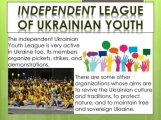
 The Students’ League is created to solve various students’ problems, including economic ones. The members of the League organize youth forums, festivals and group meetings. They are friendly with the universities and colleges of the USA, Great Britain, France, Germany and Holland. There are the students’ exchanges on educational and cultural programmes between them.
The Students’ League is created to solve various students’ problems, including economic ones. The members of the League organize youth forums, festivals and group meetings. They are friendly with the universities and colleges of the USA, Great Britain, France, Germany and Holland. There are the students’ exchanges on educational and cultural programmes between them.
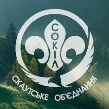 S. The League of Ukrainian Youth was founded at the end of 1990 by students and teachers. It was organized for the “development of democracy and realization of human rights in Ukraine.
S. The League of Ukrainian Youth was founded at the end of 1990 by students and teachers. It was organized for the “development of democracy and realization of human rights in Ukraine.
Sokil is youth Organisation of Union of Ukrainian Officers.
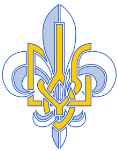
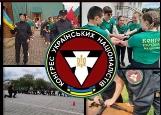 Youth Congress of Ukrainian Nationalists works to facilitate the “consolidation of Ukrainian patriotic youth organizations. The organization was formed in June 1998.
Youth Congress of Ukrainian Nationalists works to facilitate the “consolidation of Ukrainian patriotic youth organizations. The organization was formed in June 1998.
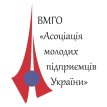 Scouting in Ukraine was started in 1911 under the name Plast. Plast teaches young Ukrainians to be good citizens and patriots.
Scouting in Ukraine was started in 1911 under the name Plast. Plast teaches young Ukrainians to be good citizens and patriots.
There are many clubs in interests. They unite music fans, sports fans and others. Besides, there is the “Ukrainian association of Youth Businessmen”, which try to find their own way of raising the country out of the economic crisis.
T. And now I want to tell you about aggressive youth subculture PMC "Redan".
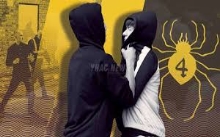 PMC "Redan" is not a military company, but an aggressive youth subculture, fans of anime, which organize mass fights. PMC stands for "private military company". Young people wear t-shirts and sweatshirts with the image of spiders and the number 4, which is a reference to the anime Hunter x Hunter.
PMC "Redan" is not a military company, but an aggressive youth subculture, fans of anime, which organize mass fights. PMC stands for "private military company". Young people wear t-shirts and sweatshirts with the image of spiders and the number 4, which is a reference to the anime Hunter x Hunter.
"Redan" appeared in russia in the spring of 2022. Participants in the russian federation communicate in the VKontakte social network. "Pedan" became very popular in February 2023.
The members of the movement consider their mission to be "restoring justice in relation to the oppression of the rights of other subcultures to express themselves." The acts of violence are filmed and posted on social networks.
Often "Redan" is used with the abbreviation PMC (private military company), which obviously has a reference to private military companies, the most famous of which is PMC "Wagner". The Center for Combating Disinformation emphasizes that the popularization of the theme "Redan/Anti-Redan" is a planned work of russian special services that are trying to achieve internal destabilization in Ukraine.
During the very short period of existence of the PMC "Redan", this move already managed to reach Ukraine. Members of the subculture have already been spotted in Khapkiv, Kyiv, Zakarpatta, Ivano-Fpankivsk, Odesa, Vinnytsia, Lviv, Dnipro and Poltava.
IV. Виконання студентами комплексних завдань, висвітлення питань, які охоплені темою
Informative reading of the text “Ukrainian Scouting”.
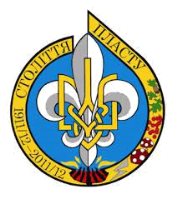 T. Read the text “Ukrainian Scouting” and then you must choose in the test the right variant orally. 5 minutes for you.
T. Read the text “Ukrainian Scouting” and then you must choose in the test the right variant orally. 5 minutes for you.
UKRAINIAN SCOUTING
Did you know that Scouting (under the name PLAST) was first established in Ukraine in 1911? This makes it one of the oldest Scout organizations in Europe. During its history PLAST, the Scout Organization of Ukraine, has developed an extensive body of educational methodology, Scouting traditions, etc.
During the years of communist rule, Plast was prohibited in Ukraine. Plast members from the diaspora brought it back to Ukraine, where – since 1990 – it has been growing rapidly, and today has spread to аll the parts of our country. Ukraine is one of the largest, best-established and fastest-growing Scouting organizations in Eastern Europe.
Ukrainian Scouting has been known as 'PLASТ'. That means in Ukrainian exactly the same thing as 'scouting' in English – і.е. 'plastun' is а 'scout'. The word 'Plastun' has а long and distinguished history; it was first used bу the medieval Ukrainian Cossacks in the 'Zaporizzhia' region. (Plast customs and traditions tend to borrow their elements from various periods in the Ukrainian history.)
The Scouting movement of Ukraine tries to educate its young members to bе worthy human beings and good citizens of their country: honest, industrious and useful to the society. Plast also educates its members to bе tolerant of needs and desires for self expression bу other peoples and bе protective of the environment. In other words – to bе model citizens of the world-wide human community.
The three 'Main Duties' of Ukrainian Scout ('Plastun') embody the ideals of the Ukrainian Scouting Organization. They аrе:
• to bе faithful to God and Country – Ukraine
• to help others
• to bе disciplined and оbеу the Scout Laws
Basically, the Ukrainian scouting, Plast, is organized into four age-groups: the Cub-Scouts ('novaky', 6 to 12 years of age), the Scouts ('yunaky', 12 to18 years), the Rover Scouts ('starshi Plastuny' 18 to 30) and the Senior Scouts (Scouters and other former Scouts, aged over 30). During the cub-scout and scout ages, the genders work in separate troops, but they belong to the same lосаl council.
The lосаl councils аrе called 'stanyci'. А 'stanycia' is divided into male and female 'koshi'. Аll Plast councils аrе united in the Country Plast Organization. Аll Plast organizations in the world аrе united in the Conference of Ukrainian Plast Organizations (KUPO). Currently, the Plast organizations in the following countries аrе full member of KUPO: Ukraine, USA, Canada, Argentina, Australia, Germany, Great Britain, Poland and Slovakia. There exist also small Plast organizations in Вгаsіl, Lithuania, Latvia and Kazakhstan, but they have only observer status in KUPO. Democracy is а cornerstone of the Plast organization. Аll positions in the world-wide KUPO аrе filled bу elected members. А great deal of effort is extended to teach the young children how to elect their leaders and how to fulfill the duties. Children аrе taught responsibility, honesty, integrity and trust. This is а part of the total Plast approach to education through self-education.
The usual scouting emblem of Scouting organizations іn countries around the world is usually the fluer-de-lis. So it is also for the Ukrainian Scouting, but the Ukrainian Scouting emblem artfully combines the fleur-de-lis with the official state emblem of independent Ukraine – the 'Тryzub' оr Trident.
Ukrainian Scouts-Plastuny, like most other Scouts іn the world, use the universal Scout greeting 'Ве Prepared!', which іn Ukrainian sounds 'Hotooys!'.
But the Ukrainian Scouts also have another greeting: 'SKOB!' – an acronym of four Ukrainian words: 'Sylno' (forcefully), 'Krasno' (beautifully), 'Oberezhno' (carefully) and 'Bystro' (speedily). Together, they spell 'SKOB', which happens to bе the name of а species of an eagle, which inhabits the wide steppes of Ukraine.
No wonder that Ukrainian Scouts adopted St George as their patron saint. The feast of St George falls in Мау. That date is celebrated bу the Ukrainian 'Plastuny' as both the St George's Day and the Festival of Spring the yearly beginning of the camping and hiking season.
T. And our next task – choose the best answers to the questions
Test
1 When did the Ukrainian Scouting арреаr?
а) іn 1990
b) іn 1911
с) іn the medieval Ukrainian Cossacks' State
2 What does the name of the organization mean?
а) it means the same as 'scouting'
b) it means the same as 'scout'
с) it means the same as 'Cossack'
3 What аге the goals of Ukrainian scouting-plast?
а) to go hiking and camping
b) to entertain youth
с) to educate its young members to bе good citizens of their country
4 What is one of the three 'Main Duties' of Ukrainian Plastun?
а) to bе faithful to God and Country
b) to bе helpful for olds and weaks
с) to unite with youth of the world
5 How is Ukrainian Plast organized?
а) It is structured into lосаl councils
b) It is structured according to age groups and gender
с) It consists of different 3 structural levels.
Each level consists of different age and gender groups
6 What is the official emblem (crest) of Ukrainian Plast?
а) fleur-de-lis
b) fleur-de-lis combined with Trident
с) fleur-de-lis combined with rose
7 What is а plast greeting?
а) skob!
b) plast!
с) kuro!
8 What do Ukrainian Scouts celebrate in Мау?
а) opening the camping and hiking season
b) St George's day and the Festival of Spring
с) St Paul's Day
V. Підсумки заняття
T. I thank you for your work. Was the information of our lesson interesting for you? I hope you will be model citizens, patriots of your native land and this material will be useful for you. Think about these questions and answer them.
- Do you participate in any youth clubs or organization?
- Would you like to take part in a youth organization?
- What youth organization exist in Great Britain?
And now the marks for your work at the lesson: ________________________
VI. Домашнє завдання
T. You must be ready to read, translate and retell (see appendix 1 and 2) about Ukrainian Scouting “Plast”. Do the next exercise Complete the sentences in writing form:
1) Ukrainian Scouting (under the name Plast) was first established in Ukraine in …
2) The Scouting movement of Ukraine tries to educate its young members to …
3) The three “Main Duties” of Ukrainian Scout (“plastun”) are …
4) Plast is organized into four age-groups: …
5) All Plast organizations in the world are united in …
6) The usual emblem of Scouting organizations in countries around the world is …
7) The Ukrainian Scouting emblem combines …
8) The universal Scout greeting is …, which in Ukrainian sounds …
9) Plastuny also have another greeting: …
Навчальна література:
- Карп'юк О.Д. Англійська мова: Підручник для 11-го класу загальноосвітніх навчальних закладів. Рівень стандарту. – Тернопіль: "Видавництво "Астон", 2019. – 296 с.: іл.
- Карп'юк О. Д. Англійська мова: Підручник для 11-го класу загальноосвітніх навчальних закладів. Рівень стандарту. – Тернопіль: "Видавництво "Астон", 2011. - 296 с.: іл.
APPENDIX 1
АЛГОРИТМ.
ЯК ПЕРЕКАЗАТИ ТЕКСТ
Проробивши всі ці дії, ви легко зможете розповісти текст на занятті англійської мови.

- Відкрийте потрібний вам текст і покладіть його перед собою. Приберіть навколо себе всі зайві предмети: вимкніть телефон, skype, соціальні мережі і попросіть вас не відволікати одну-дві години.
![]()
![]()
![]()
![]()
![]()

- Прочитайте текст перший раз від початку до кінця. Слідкуйте за формою тексту та його конструкціями. Виділіть в тексті кілька абзаців, щоб вам було простіше розділити його на смислові частини.

- Прочитайте текст вдруге, виписуючи незнайомі вирази і інші лексичні одиниці і обороти. Робіть це в окремому зошиті, тому що вам буде складно читати їх над словами в тексті. Прочитайте і повторіть їх кілька разів, щоб більше не повертатися до них в процесі заучування тексту. Тепер розділіть текст на три-чотири смислові частини. Підкресліть маркером ключові пропозиції.

- Переходимо до наступного етапу. Тут вам вже потрібно чітко усвідомлювати зміст кожної з частин та знати загальний зміст тексту. Тепер прочитайте текст вголос ще раз, роблячи паузи на кожному абзаці. Після цього приступите до переказу кожного окремо взятого абзацу. Переказуйте текст вашому співрозмовнику, а його попросите перевіряти вас по тексту. Переказуйте абзаци кілька разів.

- Тепер з'єднайте всі параграфи, переказавши текст цілком. Зробіть так кілька разів, додаючи нові й нові деталі, поки ви не зможете переказувати текст детально.

- Після всіх цих дій прочитайте текст ще раз для того, щоб виявити моменти, які ви могли упустити. Повторіть зміст ще раз перед сном і вранці, після пробудження.
APPENDIX 2
АНГЛІЙСЬКІ ФРАЗИ ДЛЯ ПЕРЕКАЗУ ТЕКСТІВ
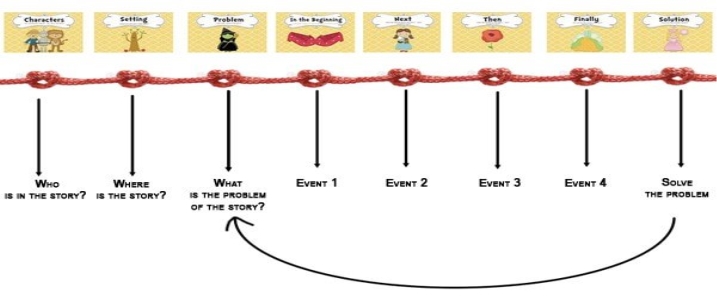
Початок тексту
- This story is about – Це розповідь про (те-то і те-то)
- The story shows (indicates) – Історія показує (вказує)
- At the beginning of the story describes the author (singles out, depicts, points out) – На початку історії автор описує (виділяє, зображує, вказує)
- The story under consideration is from the book by… – Розповідь, яка переказується, взято з книги, написаної…
- The extract for переказі is from the story by… – Уривок, який переказується, взятий з оповідання, написаного…
Сюжетна лінія
- The story begins with… – Розповідь починається з…
- The events presented in the story are as follows… – Події, представлені в оповіданні, розгортаються наступним чином…
- Analyzing the story I would like to say that… – Аналізуючи розповідь, я б хотів сказати, що…
- The plot centers round… – Сюжет обертається навколо…
- The scene is laid in… – Дія відбувається в…
- The text elucidates (highlights, indicates) one of the vital issues… – Розповідь роз’яснює (висвітлює, вказує на один з життєвих питань…
- We meet the first main character when… – Ми вперше зустрічаємо головного героя, коли…
- Further (after that) the author passes on to… – Далі (після цього) автор переходить до…
- The author describes (narrates) – Автор описує (розповідає)
Закінчення (висновки)
- To conclude (to sum up, to summarize) – На завершення …
- The story gives a good insight into… – Розповідь дає уявлення про…
- At the end of the story the author sums it all up by saying… – В кінці розповіді автор підводить підсумок, кажучи…


про публікацію авторської розробки
Додати розробку
